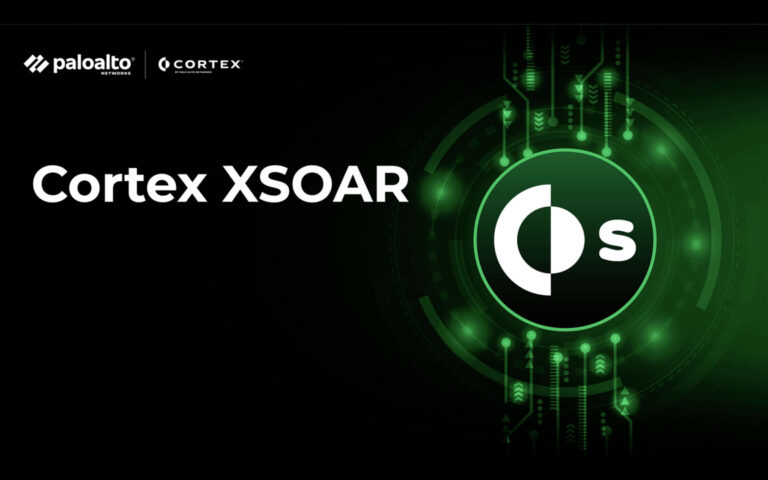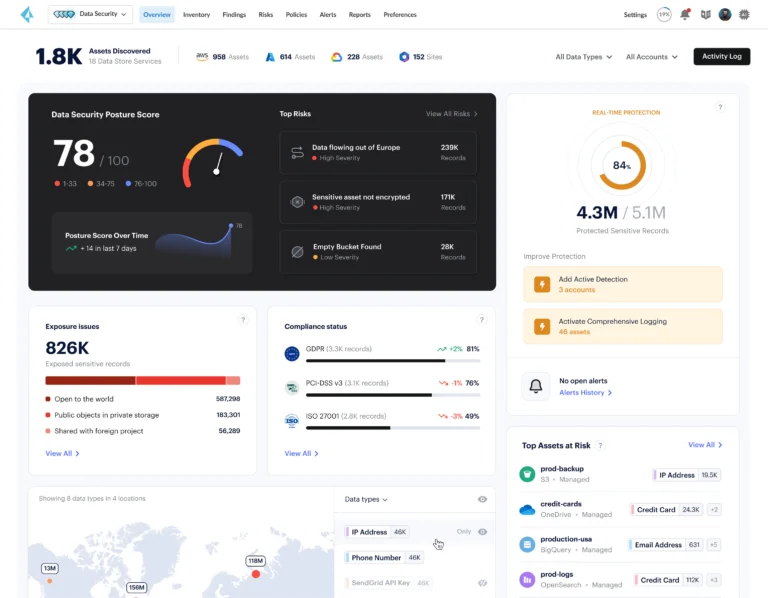In the ever-evolving landscape of digital security, Zero Trust Architecture (ZTA) emerges as a pivotal strategy for enterprises aiming to fortify their cyber defenses. This executive guide provides a comprehensive overview of Zero Trust Architecture, highlighting its importance, implementation strategies, and how it can lead to cybersecurity success.
Understanding Zero Trust Architecture
Zero Trust is a security concept centered on the belief that organizations should not automatically trust anything inside or outside their perimeters. Instead, they must verify anything and everything trying to connect to their systems before granting access. This paradigm shift from traditional security models is crucial in the face of rising cyber threats.
Brief History of ZTNA
Zero Trust Network Access (ZTNA) emerged as a pivotal cybersecurity concept around 2010, coined by John Kindervag of Forrester Research. It fundamentally challenged traditional network security paradigms, which relied heavily on perimeter-based defenses, by advocating for a “never trust, always verify” approach.
This shift gained momentum with the rise of cloud computing, mobile computing, and the increasing prevalence of remote work, which blurred the traditional network boundaries. High-profile implementations, notably Google’s BeyondCorp in 2017, showcased its practicality, leading to wider adoption. The COVID-19 pandemic further accelerated this trend as organizations urgently sought to secure remote access for their workforce, positioning ZTNA as a critical component in modern, adaptive security architectures.
Today, ZTNA continues to evolve, integrating advanced technologies like AI and machine learning, and becoming a fundamental aspect of comprehensive cybersecurity strategies in an era where traditional network perimeters have all but dissolved.
ZTNA Adoption in 2024
As of 2024, the adoption of Zero Trust Architecture (ZTA) continues to grow across various industries. Key insights include:
•Global Adoption Rates: Over 30% of organizations worldwide have already implemented a Zero Trust strategy, with an additional 27% planning to do so within the next six months.
•Industry-Specific Adoption:
•Financial Services: 71% of financial services organizations have an active Zero Trust initiative in place, reflecting a significant increase from previous years.
•Healthcare: 47% of healthcare organizations have implemented Zero Trust initiatives, a decrease from 58% in 2022, possibly due to reduced spending.
•Budget Allocations: Approximately 80% of organizations reported increases in their Zero Trust budgets in 2023 compared to the previous year, indicating a growing commitment to this security model.
Key Principles of Zero Trust
- – Least Privilege Access: Grant users only the access they need to perform their job.
- – Micro-Segmentation: Breaks up security perimeters into small zones to maintain separate access for separate parts of the network.
- – Multi-Factor Authentication (MFA): Requires multiple pieces of evidence for authentication, reducing the risk of a breach.
- – Continuous Monitoring and Validation: Regularly verifying and updating security configurations and software.
Implementing Zero Trust in Your Organization
Getting started with Zero Trust Network Access (ZTNA) might seem like a daunting task, but it’s really just about shifting the way you think about security. Instead of assuming everything inside your network is safe, you approach every connection—whether it’s a user, device, or application—with a healthy dose of skepticism. So, where do you begin? Let’s break it down in a way that feels more natural.
First things first: understand what Zero Trust is all about. It’s not just a fancy buzzword—it’s a mindset. The idea is simple: never trust, always verify. No more blind faith in the corporate network, no more open doors for attackers to wander through. Sounds good, right? But putting it into practice means rethinking how you protect your people and data.
Start by taking stock of your current setup. Think of it like cleaning out your closet. What do you already have in place? Are your tools—like VPNs, firewalls, and access controls—actually doing their job? What’s working, and where are the holes? Maybe that old VPN is like an outdated jacket you’ve been meaning to replace. Spoiler alert: it’s probably time to let it go.
Next, get a sense of who needs access to what. This is where you play detective. Who are your users? What devices are they using? Are they working remotely, on the go, or in the office? And most importantly, what apps or data do they need access to? The goal here is to map out all the connections you need to secure, so you can stop threats before they even get close.
Now comes the fun part: choosing your tools. The ZTNA market is packed with solutions, from big players like Palo Alto Networks, Citrix, and Zscaler to niche tools that might surprise you. Look for something that fits your needs—whether you’re a cloud-first company or still transitioning from on-premise systems. Bonus points if it’s easy to integrate with what you’re already using, like your Identity Provider (think Okta or Azure AD) or endpoint security tools.
Here’s a pro tip: don’t try to do everything all at once. Start small. Pick a specific group—maybe your remote team or a high-risk department—and test your chosen solution with them. It’s like dipping your toes into the pool before jumping in. Use this time to figure out what works and what doesn’t. Once you’ve got it dialed in, you can roll it out to the rest of your organization.
As you go, keep an eye on how things are running. Are users finding it easy to connect securely? Are devices staying compliant? Most ZTNA tools come with dashboards and analytics to help you track this stuff, so use them. And don’t forget to check in with your team—they’ll be your biggest source of insight on what’s working and what’s not.
Finally, make sure everyone’s on the same page. Train your staff, explain why ZTNA matters, and set clear expectations for how they should use it. The best security system in the world won’t help if your users aren’t on board.
ZTNA isn’t just a tool—it’s a journey toward a more secure and agile way of working. Start small, stay curious, and keep refining as you go. You’ve got this.
Here are steps to guide you:
Step 1: Assess Your Current Security Posture
Understanding your existing security setup is vital. Identify all users, devices, and services in your network and their interdependencies.
Step 2: Map the Transaction Flows
Analyzing how data moves across your organization helps in understanding and implementing micro-segmentation and access policies effectively.
Step 3: Architect Your Zero Trust Network
Design a Zero Trust model tailored to your organization’s needs. This involves choosing the right technology partners and solutions for identity verification, access management, and threat detection.
Step 4: Implement the Zero Trust Policies
Gradually enforce Zero Trust policies. Begin with the most sensitive data and systems, expanding coverage as you go.
Step 5: Monitor and Maintain
Continuously monitor the network and adjust policies as necessary. Zero Trust is an ongoing process, adapting to new threats and changing environments.
Benefits of Zero Trust Architecture
- nhanced Security Posture: By verifying every access request, Zero Trust minimizes the chances of unauthorized access.
- Data Protection: Safeguards sensitive information by limiting access and exposure.
- Compliance: Helps in meeting various regulatory requirements by providing robust security measures.
- Reduced Attack Surface: Limits the potential entry points for attackers.
The Future of ZTNA
The future of Zero Trust Network Access (ZTNA) and its evolution into ZTNA 2.0 is poised to be a transformative phase in cybersecurity. Building on the foundational principles of “never trust, always verify,” ZTNA 2.0 will likely integrate more deeply with advanced technologies like artificial intelligence (AI) and machine learning (ML) to enhance real-time decision-making and contextual analysis. This evolution aims to offer more dynamic, intelligent security solutions that can adapt to the increasingly complex and fluid digital environments of modern enterprises. Furthermore, ZTNA 2.0 is expected to streamline user experience without compromising on security, integrating seamlessly with diverse cloud environments and expanding its scope to encompass not just access control but also continuous risk assessment and adaptive policy enforcement. This shift signifies a move towards more proactive, predictive security models, essential for addressing the sophisticated cyber threats of the future.
The Innocom Advantage – Our Solutions
Our vast experience in providing comprehensive Zero Trust solutions, enable us to provide a complete cyber security strategy, tailored to your organisation.
Recognizing that no two organizations are the same, Innocom emphasizes a customized approach to Zero Trust implementation. Our strategy begins with a thorough assessment of an organization’s specific security needs, followed by a detailed plan that encompasses every aspect of Zero Trust – from identity verification to micro-segmentation and continuous monitoring.
At the core of our Zero Trust solutions is an advanced technology stack that integrates seamlessly with existing IT infrastructure.
Innocom offers a range of products and solutions to support the implementation of a Zero Trust Architecture:
1.Palo Alto Networks Solutions: Palo Alto provides comprehensive cybersecurity solutions that align with Zero Trust principles. Their offerings include Next-Generation Firewalls and the Cortex suite, which deliver advanced threat protection and continuous monitoring.
Next-Generation Firewalls (NGFWs): Palo Alto Networks’ NGFWs provide advanced threat prevention and granular traffic control. They enable organizations to enforce security policies based on applications, users, and content, effectively segmenting networks and preventing lateral movement of threats.
Prisma Access: This cloud-delivered security platform extends consistent security policies to remote users and branch offices. Prisma Access integrates Zero Trust Network Access (ZTNA) principles, ensuring secure access to applications regardless of user location.
Prisma Cloud: Prisma Cloud offers comprehensive security for cloud-native applications and infrastructure. It provides visibility and threat detection across hybrid and multi-cloud environments, aligning with Zero Trust principles by continuously monitoring and securing workloads.
Cortex XDR: This extended detection and response platform integrates data from multiple sources to detect and respond to threats. Cortex XDR enhances Zero Trust by providing continuous monitoring and analytics, enabling proactive threat hunting and incident response.
Cloud Identity Engine: The Cloud Identity Engine simplifies identity-based access controls by integrating with various identity providers. It ensures that access decisions are based on verified user identities, a core tenet of Zero Trust.
Advanced URL Filtering and DNS Security: These services provide real-time prevention of web-based and DNS-layer threats. By inspecting and controlling web traffic, they prevent access to malicious sites and protect against phishing attacks, supporting the Zero Trust principle of continuous validation.
Learn More about Palo Alto’s ZTNA solutions
2.Proofpoint Meta: This solution serves as a zero-trust enterprise VPN alternative, enabling secure remote access to applications across data centers and the cloud. It facilitates the creation of a software-defined perimeter, delivering network security from the cloud.
3.Juniper Mist Access Assurance: Juniper’s service enforces zero-trust network access policies for various devices, including guest, IoT, BYOD, and corporate devices. It offers cloud-hosted, microservices-based authentication, simplifying IT operations with a flexible authorization policy framework.
4.StrongDM: This platform implements Zero Trust principles by securing every connection to critical resources. It provides real-time monitoring of user activity, ensuring security and compliance, and offers detailed logs for comprehensive audit trails.
5. Citrix: offers comprehensive Zero Trust Network Access (ZTNA) solutions designed to provide secure, contextual access to applications and data, irrespective of user location or device. By adhering to the Zero Trust principle of “never trust, always verify,” Citrix ensures that every access request is authenticated, authorized, and continuously monitored.
Citrix Secure Private Access: This solution delivers adaptive access to all corporate applications, whether deployed in the cloud or on-premises. It enforces security at the application layer, allowing organizations to replace traditional VPNs and prevent network-level attacks.
Citrix Adaptive Authentication Service: This service enables advanced authentication by verifying user identity and authorization based on factors such as location, device status, and user context. It intelligently selects appropriate authentication methods and facilitates contextual access to authorized resources.
Citrix Device Posture Service: This cloud-based solution enforces Zero Trust principles by assessing the compliance of endpoint devices before granting access. It evaluates factors like operating system version, security patches, and the presence of antivirus software to determine device trustworthiness.
4.Citrix Analytics for Security: This service provides continuous monitoring and risk assessment by aggregating events from the entire Citrix portfolio and third-party security solutions. It generates user risk scores to enable proactive threat detection and response.
Learn More about Citrix’s ZTNA solutions
When Do You Need To Adopt ZTNA?
Adopting Zero Trust Network Access (ZTNA) becomes critical for organizations when specific conditions or challenges arise. Below are scenarios and triggers that signal the need to adopt ZTNA:
1. Increasing Remote Workforce
If your organization has a significant number of employees working remotely or in hybrid setups, ZTNA ensures secure access to corporate resources from anywhere, minimizing the risks associated with traditional VPNs.
2. Adopting Cloud Infrastructure
When migrating applications and data to the cloud, ZTNA provides consistent security policies across on-premises and cloud environments, ensuring seamless and secure access.
3. Growing BYOD and IoT Usage
ZTNA is crucial when employees use personal devices (Bring Your Own Device – BYOD) or when IoT devices proliferate in the network. It verifies and secures every device attempting to access the system.
4. Rising Cybersecurity Threats
If your organization is experiencing increased phishing attempts, ransomware attacks, or insider threats, ZTNA mitigates these risks by limiting access based on identity, device posture, and contextual factors.
5. Compliance and Regulatory Requirements
For industries requiring strict compliance (e.g., finance, healthcare, government), ZTNA helps enforce policies that align with frameworks like GDPR, HIPAA, and PCI DSS, ensuring only authorized users access sensitive data.
6. Modernizing Legacy Systems
When replacing legacy systems like VPNs, which are often less secure and more complex to manage, ZTNA offers a modern alternative that is scalable and better suited for today’s distributed workforce.
7. Mergers and Acquisitions
During M&A activities, ZTNA enables secure and rapid integration of new users, systems, and resources without compromising security.
8. Complex Network Segmentation Needs
For organizations with diverse and complex environments, ZTNA simplifies network segmentation by allowing role-based, application-specific access rather than broad network access.
9. Cost Efficiency and Simplified Management
When looking to reduce operational costs and simplify IT management, ZTNA provides centralized policy enforcement and eliminates the need for multiple security tools.





